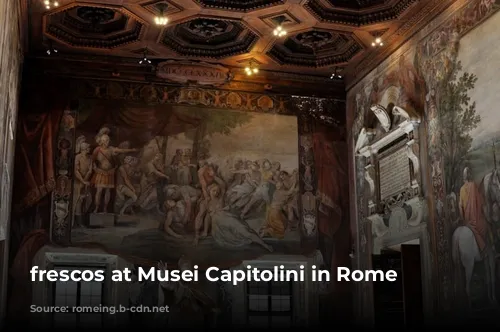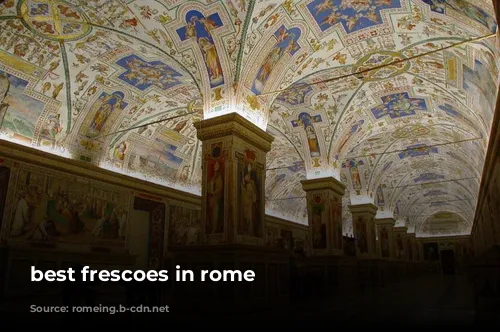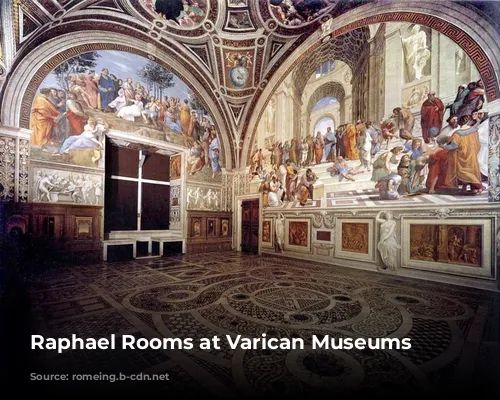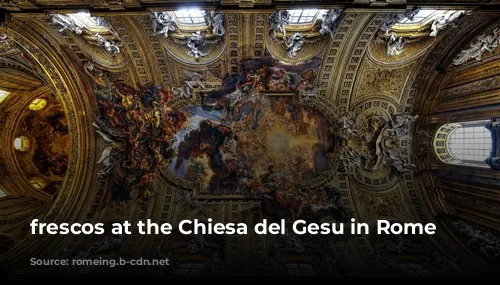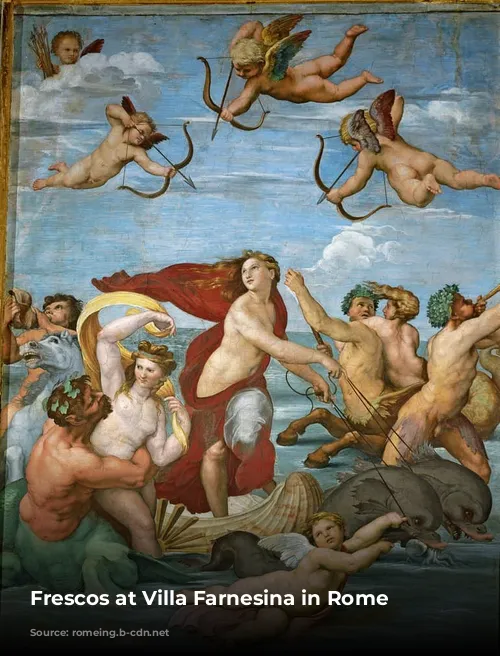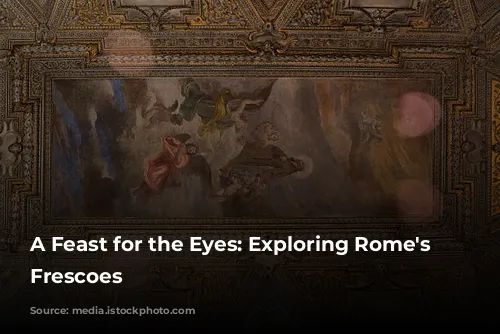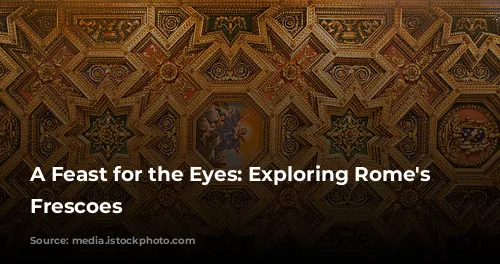Rome, a city steeped in history and art, boasts a treasure trove of stunning frescoes that captivate the imagination and transport viewers through time. From the ancient Roman villas to the opulent churches of the Baroque era, the walls of Rome are adorned with vibrant masterpieces that tell stories, celebrate triumphs, and evoke wonder. Join us as we embark on a journey to uncover some of the city’s most impressive frescoes, hidden in plain sight.
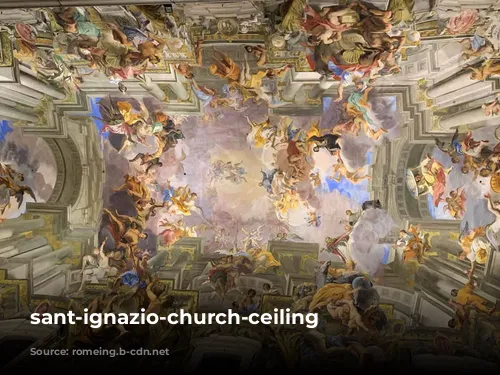
Ancient Splendor: Stepping Back in Time
Imagine stepping into a perfectly preserved garden, not in reality, but on a wall! That’s the experience that awaits visitors to the Villa of Livia, nestled within the Palazzo Massimo. This magnificent residence, once owned by the wife of Augustus Caesar, features stunning frescoes dating back to the 1st century BC. These vivid depictions of flowers, fruits, and animals offer a glimpse into the life and aesthetic preferences of Roman elites. The frescoes were strategically placed in the cool underground of the villa, creating an illusion of an outdoor sanctuary.
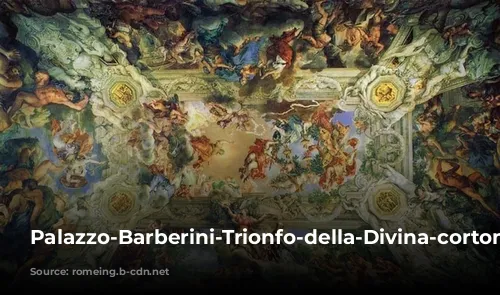
Renaissance Revelations: A Tapestry of Art
The Italian Renaissance, a period of unparalleled artistic brilliance, left its mark on Rome in the form of breathtaking frescoes. Villa Farnesina is a prime example of this artistic explosion. Commissioned by the wealthy banker Agostino Chigi, the villa was transformed into a canvas for some of the greatest Renaissance masters. Raphael, the celebrated painter, immortalized the story of Psyche and Cupid in a series of frescoes that are both beautiful and symbolic, reflecting the complexities of love and desire. Don’t miss the villa’s perfectly symmetrical gardens, a testament to the Renaissance fascination with order and harmony.
Baroque Brilliance: A Feast for the Senses
The Baroque period saw a dramatic shift in artistic style, with a focus on grandeur, movement, and emotion. Rome’s churches became stages for this artistic revolution, adorned with frescoes that captivated the imagination and created a sense of awe. The Church of Gesu, the mother church of the Jesuit order, houses a masterpiece by Giovanni Battista Gaulli. Gaulli’s astonishing vault, painted in the late 17th century, combines fresco painting, stucco, and architectural elements to create a masterpiece of illusion. The dome, painted to appear three-dimensional, is in fact completely flat. This masterful trickery exemplifies the Baroque era’s penchant for the dramatic and unexpected.
Beyond the Basilica: Exploring Rome’s Hidden Gems
The Vatican Museums are home to some of the world’s most famous frescoes, including the iconic works of Michelangelo and Raphael. While these masterpieces are certainly worth a visit, Rome offers a wealth of lesser-known fresco treasures. Sant’Ignazio, another Jesuit church, features stunning trompe l’oeil frescoes by Andrea Pozzo. The illusion of a celestial scene, with St. Ignazio ascending to heaven, is so convincing that it’s hard to believe you’re not looking at a real dome.
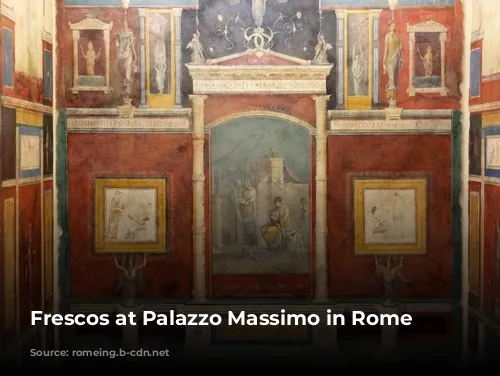
The Power of Art: Painting the Story of Rome
Rome’s artistic legacy extends beyond the Vatican and the major tourist attractions. The Capitoline Museums, while not primarily known for their frescoes, still offer a glimpse into the city’s rich history through their stunning wall paintings. The Conservators’ Apartment, once used for council meetings, features frescoes that tell the story of Rome’s power and influence. The Hall of Hannibal, adorned with exotic symbols, and the Hall of Tapestries, showcasing scenes from Ancient Rome, offer a fascinating window into the past.
Rome’s frescoes are more than just beautiful paintings; they are living testaments to the city’s cultural evolution, artistic prowess, and enduring fascination with storytelling. Whether you’re an art enthusiast or simply a curious traveler, exploring the frescoes of Rome is a journey through time and a celebration of the city’s unparalleled artistic legacy.
